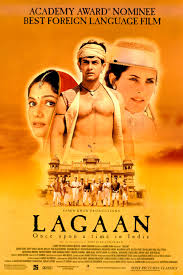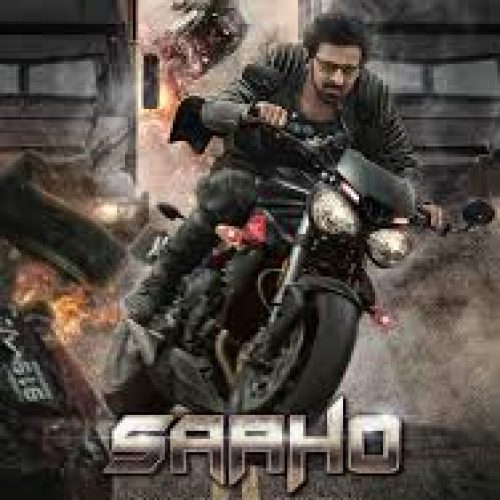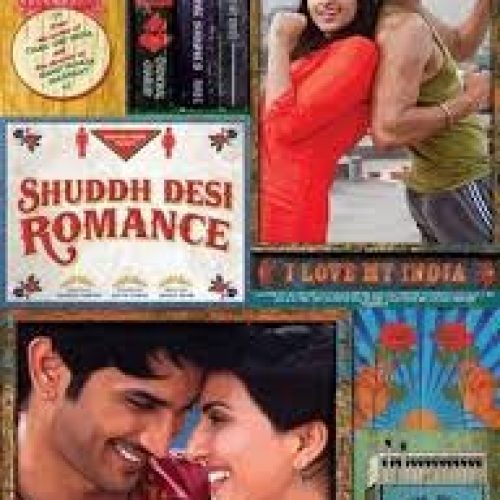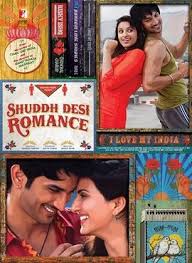When a film blends history, drama, and sports in one sweeping narrative, it either becomes a masterpiece or collapses under its ambition. Lagaan is a cinematic gem that masterfully balances these elements. Directed by Ashutosh Gowariker and released in 2001, the movie stars Aamir Khan, Gracy Singh, and Paul Blackthorne in a story set in late 19th-century colonial India. The film, a period sports drama, transports us to a small village called Champaner in British-ruled India, where the locals grapple with an oppressive tax system enforced by the British. The genre effortlessly combines elements of historical drama and sports, making for a unique and engaging viewing experience.
At its core, the plot revolves around a group of impoverished villagers struggling to pay the burdensome lagaan (tax) imposed by the British. Led by Bhuvan (Aamir), the villagers are issued a daunting challenge: if they can defeat the British in a game of cricket—a sport they know nothing about—their taxes will be forgiven for three years. What follows is a tale of perseverance, unity, and an underdog story that resonates deeply with audiences. As the villagers train under Bhuvan’s leadership, they learn the game and, more importantly, grow as a team. The stakes are high, but the real tension lies in the journey, not the final match.
One of the most striking elements of the film is its direction. Ashutosh creates a world that is visually arresting yet emotionally grounded. He paints the dusty, parched landscape of rural India in vivid detail, contrasting it with the lavish, comfortable life of the British officers. This sharp juxtaposition of lifestyles enhances the underdog theme, where the villagers’ fight against overwhelming odds feels visceral and real. For instance, the sequence where the villagers first struggle to comprehend cricket’s complex rules is brilliantly shot, making the audience root for them even more as they fumble and learn. Ashutosh uses the game of cricket not just as a sport but as a metaphor for the larger socio-political conflict between India and its British colonizers. The way he builds tension—whether it’s through Bhuvan’s initial rebellion or the climactic match—is masterful.
Cinematography by Anil Mehta also plays a crucial role in immersing the audience into this period drama. The sweeping shots of the vast, barren landscape capture the harsh realities of the villagers’ lives, while the cricket scenes are shot with precision, creating a palpable sense of tension and excitement. The final match, in particular, is filmed with such skill that even if you’re not a cricket enthusiast, you’re on the edge of your seat, fully invested in every ball bowled and every run scored. The use of slow-motion shots and close-ups during the game adds to the emotional weight of the match, making it more than just a sporting event but a fight for dignity and survival.
The music by A.R. Rahman is another standout feature. From the rousing anthem “Mitwa” to the playful “Ghanan Ghanan,” the soundtrack elevates the film’s emotional tone. Rahman’s compositions blend Indian folk elements with more orchestral arrangements, perfectly complementing the film’s themes of hope, struggle, and unity. The music doesn’t just serve as a background element but actively drives the narrative. For example, the song “O Mitwa” becomes a rallying cry for the villagers as they band together to take on the British. Rahman’s background score is also noteworthy, heightening the drama and tension, particularly during the nail-biting cricket match sequences.
In terms of performances, Aamir delivers a standout portrayal of Bhuvan. As the village’s reluctant leader, his transformation from a carefree youth to a determined leader is both believable and inspiring. Aamir’s nuanced performance—whether it’s in his scenes of quiet defiance against the British or his earnest attempts to teach cricket to his fellow villagers—anchors the film. His chemistry with Gracy, who plays Gauri, Bhuvan’s love interest, adds a tender subplot without overshadowing the main narrative. Gracy’s portrayal of Gauri is both sincere and charming, providing a balance to the more intense moments of the film. Paul Blackthorne, as the arrogant British officer Captain Russell, gives a suitably villainous performance, embodying the cruelty and arrogance of colonial rule. His antagonistic energy drives much of the conflict in the film, making the stakes even higher for the villagers.
The supporting cast also deserves praise. Each of the villagers, played by an ensemble of talented actors, adds depth to the story. From the blacksmith Ishwar to the water carrier Kachra, each character has their own arc and moment to shine. Their individual personalities and struggles make the film feel more layered and the stakes more personal. The unity of the villagers in the face of adversity is not just a plot device but a reflection of the broader theme of India’s fight for independence, making each character’s journey significant.
The film also shines in its costume design and production value. The detailed costumes by Bhanu Athaiya faithfully recreate the late 1800s, adding authenticity to the period setting. The contrast between the villagers’ simple, worn-out attire and the British officers’ polished uniforms further emphasizes the social divide. The sets, from the dusty cricket field to the grand British cantonment, are meticulously designed, adding to the film’s immersive quality.
One of the film’s few challenges is its length. At nearly four hours, the film demands patience, but it never feels unnecessarily stretched. The pacing is well-managed, with each scene contributing to the overall narrative. The lengthy runtime allows for the development of secondary characters, which in turn enriches the story, making the climax even more impactful. The editing by Ballu Saluja ensures that the film moves at a steady pace, and the slow buildup to the climactic cricket match is worth the wait.
Overall, Lagaan is a near-perfect blend of drama, sports, and social commentary. It tells a compelling underdog story that resonates not just because of its historical setting but because of its universal themes of unity, courage, and perseverance. The film’s direction, performances, music, and cinematography come together to create an unforgettable cinematic experience. For those who enjoy historical dramas with a sports twist, or simply love an inspirational story of the human spirit, this is a must-watch. Ashutosh has crafted a film that transcends its genre, leaving a lasting impression long after the credits roll. Highly recommended for anyone looking for an engaging, emotional, and thought-provoking film.







